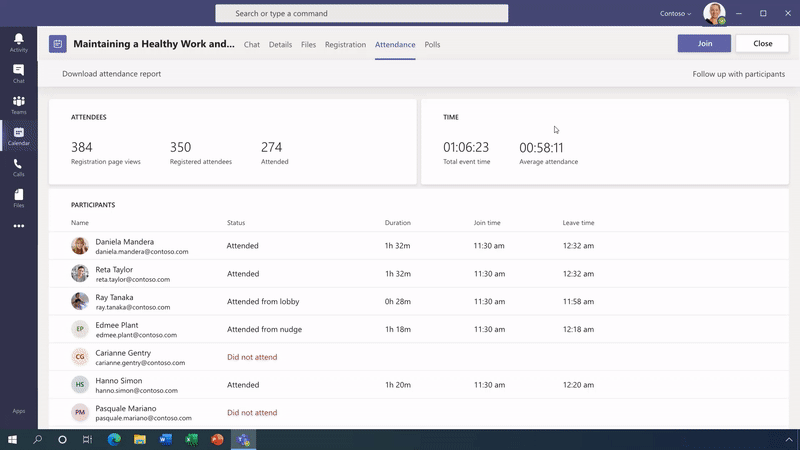This article is contributed. See the original author and article here.
Microsoft engineering teams have been busy taking your feedback resulting in a plethora of updates. Microsoft service updates in the news includes Webinar enablement made available in Microsoft Teams, Azure IoT Central feature updates, Enabling Azure Site Recovery (ASR) while creating Azure Virtual Machines, Attribute-based Access Control (ABAC) in Azure Storage, and the Bicep enabled Microsoft Learn Module of the Week.
Full-featured webinars for Microsoft Teams
Beginning this week, Microsoft has announced that Webinars and PowerPoint Live are beginning to rollout in Microsoft Teams. Additionally, Presenter mode will begin to roll out later in May. With these capabilities, you have new ways to deliver polished, professional presentations in meetings of all sizes, from small internal meetings to large customer-facing webinars and events—all from a single application.
Learn more about how to use these new capabilities in Microsoft Teams via the following guide: Introduction to Webinars in Microsoft Teams
Azure IoT Central new and updated features for April 2021
Microsoft has announced that the IoT Central API service is now generally available and can be accessed through the production v1.0 endpoint. These APIs and the breadth of the IoT Central extensibility surface can now be used to develop production-ready solutions.
Following customer feedback, Microsoft iterated on thier API surface and invested in new capabilities including the ability to:
- Manage API tokens.
- Create and manage DTDLv2 device templates.
- Create, onboard, and manage devices.
- List the user roles in your application.
- Add, update, and remove users.
Other added abilities made available in this update include the ability to create a link containing a device ID parameter populating a device dashboard, support for components in Edge modules and improvment in the ability to diagnose device health and connection via device connectivity events.
Further details surrounding the IoT Central April 2021 update can be found here: General availability: Azure IoT Central new and updated features—April 2021
Enable Azure Site Recovery (ASR) while creating Azure Virtual Machines
Microsoft recently announced a new capability in Azure Site Recovery (ASR) to further improve the Business Continuity and Disaster Recovery (BCDR) posture of Azure VMs – in-line enablement of ASR at the time of VM creation. This capability helps you avoid the hassle of separately configuring DR across regions (or zones) after the creation of VMs.
Please note that this offering is currently limited to Windows VMs and CentOS, Oracle Linux, and Red Hat Linux VMs. Microsoft also does not currently support zone to zone (in region) disaster recovery through the Create VM workflow. Support for pending Linux distros and zone to zone disaster recovery is coming soon.
Learn more how to create a Windows VM or a Linux VM via the portal.
Azure Storage: Attribute-based Access Control (ABAC) now in public preview
Attribute-based access control (ABAC) is an authorization strategy that defines access levels based on attributes associated with security principals, resources, requests, and the environment. Azure ABAC builds on role-based access control (RBAC) by adding conditions to Azure role assignments in the existing identity and access management (IAM) system. This preview includes support for role assignment conditions on Blobs and ADLS Gen2, and enables you to author conditions based on resource and request attributes.
Role-assignment conditions enable finer-grained access control for storage resources. They can also be used to simplify hundreds of role assignments for a storage resource. The preview enables you to author conditions for storage DataActions, and can be used with built-in or custom roles.
Learn more about testing the Attribute-based Access Control (ABAC) preview here: Authorize access to blobs using Azure role assignment conditions (preview)
Community Events
- Microsoft Build – Explore what’s next in tech and the future of hybrid work. Join us May 25-27, 2021 at Microsoft Build.
- Patch and Switch – It has been a fortnight and Patch and Switch are back to share the stories they have amassed over the past two weeks.
- Hello World – Special guests, content challenges, upcoming events, and daily updates
Microsoft Australia Security Skills Bootcamp (free, online) 17-21 May
MS Learn Module of the Week
Introduction to infrastructure as code using Bicep
This module will enable you to describe the benefits of using infrastructure as code, Azure Resource Manager, and Bicep to quickly and confidently scale your cloud deployments. Determine the types of deployments for which Bicep is a good imperative deployment tool.
Learning objectives
After completing this module, you’ll be able to:
- Describe the benefits of infrastructure as code.
- Describe the difference between declarative and imperative infrastructure as code.
- Explain what Bicep is, and how it fits into an infrastructure as code approach.
Learn more here: Introduction to infrastructure as code using Bicep
Let us know in the comments below if there are any news items you would like to see covered in the next show. Be sure to catch the next AzUpdate episode and join us in the live chat.
Brought to you by Dr. Ware, Microsoft Office 365 Silver Partner, Charleston SC.





Recent Comments